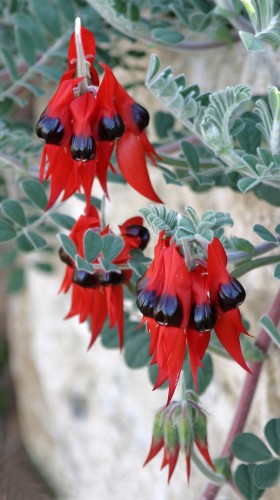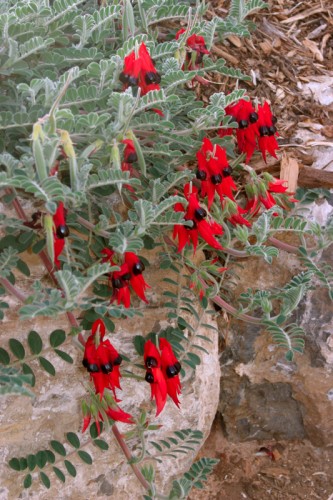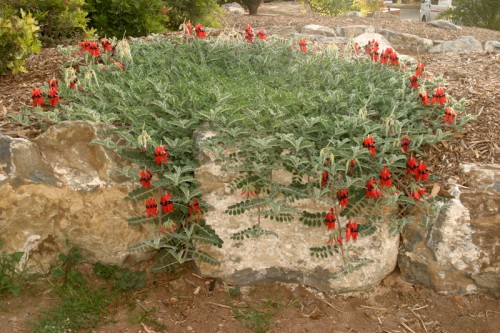I have just planted three of these plants. They were quite tight in their pots but were making new shoots so I decided to take a chance and put them in as they were. Mine are a yellow-green colour, but you can also get pink, orange, red, yellow or green, and sometimes mixed colours. The usual colour is the yellow -green
Two have gone onto a raised mound, and the third at ground level but with a dose of gypsum in case there is clay below the root ball. Mounds need only be 120 mm above ground level to achieve the drainage required.
This is the hardiest of the kangaroo paws and is used in breeding the new hybrids that are in many nurseries these days. I must say that I like the species plants even though I admire the new colours.
The strappy leaves on this plant can grow up to a metre tall and the clump to a metre across. However the flower spikes can grow to two metres . The seed I was given came from plants that had these very tall spikes and many flowers on the stalk.
It grows best in moist, light to medium soils, in partial to full sun, but will tolerate dappled shade. It can be damaged by frost.
Black ink disease is a problem in misty areas or locations where there is not enough air movement. Slugs and snails will cause a lot of damage.


